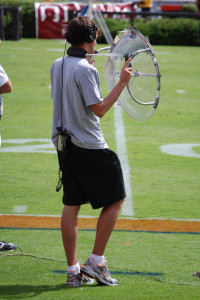The Parabolic Mic Was First Used for Opera
Story Highlights
 When Thomas Edison filed his first patent caveat for motion pictures in 1888, the only purpose he mentioned for them was opera. When SMPTE-founder Charles Francis Jenkins explained in 1925 why TV sets needed both picture displays and loudspeakers, it was “so that an entire opera in both action and music may be received” (Vision by Radio, p. 109).
When Thomas Edison filed his first patent caveat for motion pictures in 1888, the only purpose he mentioned for them was opera. When SMPTE-founder Charles Francis Jenkins explained in 1925 why TV sets needed both picture displays and loudspeakers, it was “so that an entire opera in both action and music may be received” (Vision by Radio, p. 109).
Opera was the first electronic home entertainment and the first pay-cable service. Consumer headphones were created for opera. But parabolic mics? It seems to be true. Here’s a report from The Electrician on July 1, 1887:
“The Telephone Company at Rome have been devoting their attention to perfecting arrangements for transmitting opera music by telephone. The best results have been attained by means of a microphone, of which the contacts are placed in the focus of a parabolic reflector. Instead of being placed at the front of the stage, it is found preferable to hang the transmitters under the columns of the first row of boxes. These trials have been made at the Théâtre National during the presentation of Puritani, and it is said that the transmission both of solos, choruses, and orchestration has attained an astonishing degree of clearness and accuracy.”
Giulio Marini, director of the Telephone Company of Rome, developed the parabolic microphone. Thanks to Michael Kaye for calling this to my attention.
